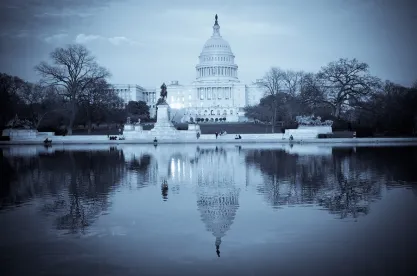On 27 October, 2020, the bipartisan leaders of the House Ways and Means Committee, Chairman Richard Neal (D-MA) and Ranking Member Kevin Brady (R-TX), unveiled the Securing a Strong Retirement Act of 2020 (H.R. 8696). H.R. 8696 incorporates a number of proposals that have been under development since passage of the Setting Every Community Up for Retirement Enhancement (SECURE) Act as part of Pub. L. 116-94 in late 2019. While there may be efforts to make progress on H.R. 8696 in the lame duck session, such as a hearing, we anticipate work on H.R. 8696 to continue into the next Congress that convenes in January 2021.
Brief History
Retirement reform is an area where there has been bipartisan achievement over the past few years. The most recent retirement reform efforts began in 2016, with the introduction of the Retirement Enhancement and Savings Act (RESA) (S. 3471) by former Senate Finance Committee Chairman Orrin Hatch (R-UT). The legislation was reintroduced in both chambers of Congress in the 115th and 116th Congresses with bipartisan support; in early 2019, RESA evolved into the SECURE Act, sponsored by Chairman Neal and Ranking Member Brady. As noted above, the SECURE Act was signed into law in late 2019. Notably, the proposals that were ultimately included in the SECURE Act were perfected with each iteration of the legislation through a deliberative process resulting from the interplay of Congressional and stakeholder engagement.
Overview of H.R. 8696
Even before passage of the SECURE Act, bipartisan members of Congress were looking ahead to the next round of retirement reform. For example, in late 2017 then-Ranking Member Neal introduced the Retirement Plan Simplification and Enhancement Act (H.R. 4524); Senate Finance Committee members Senators Rob Portman (R-OH) and Ben Cardin (D-MD), who have worked together for nearly two decades as leaders on retirement policy, introduced the Retirement Security & Savings Act (S. 1431) in early 2019. We anticipate Senators Portman and Cardin will reintroduce S. 1431 or an updated version of it in 2021.
The recently introduced H.R. 8696 incorporates elements of these bills and others, along with new proposals, aimed at strengthening the retirement security of Americans. The following highlights several of the provisions included in H.R. 8696.
Expansion of Auto-Enrollment
H.R. 8696 would require automatic enrollment of individuals in 401(k), 403(b), and SIMPLE plans upon the employee becoming eligible, beginning at a contribution rate between three and 10%. The contribution rate would be increased each year following enrollment by one percent until it is capped at 10%. Individuals can choose to opt out of enrollment. There are several exceptions to this rule for certain types of businesses and plans.
Saver’s Credit Improvements
The Saver’s Credit would be updated to increase the income limit ($40,000 for single filers, $60,000 for head of household and $80,000 for joint filers), which would be indexed for inflation in the future. Eligible filers would qualify for a tax credit of 50% of their contributions to an IRA or defined contribution plan for a maximum credit of $1,500 per person.
403(b) Plan Modifications
The legislation would:
-
Allow certain types of 403(b) plans to invest in collective investment trusts.
-
Provide 403(b) plans with the option to participate in multiple employer plans (MEPs) and provide relief from the “one bad apple rule.”
Improvements for Plan Participants
-
H.R. 8696 would increase the age for required minimum distributions from traditional IRAs and defined contribution plans from 72 to 75.
-
Beginning in 2022, the IRA catch-up contribution limit of $1,000 for individuals who are age 50 and over would be indexed to inflation.
-
For individuals age 60 and over, the catch-up contribution limit for employer-sponsored retirement plans would increase to $10,000; for SIMPLE plans, it would increase to $5,000. Both increases would be indexed for inflation. This would be effective beginning in 2021.
-
Employers could choose to provide matching contributions to a retirement plan for employees making qualified student loan payments. This would be effective beginning in 2021.
-
If an individual has $100,000 or less in their retirement accounts, they would not be subject to the required minimum distribution rule (currently age 72, though would increase to 75 under H.R. 8696).
-
The IRA and retirement plan annual charitable contribution limit would be increased from $100,000 to $130,000.
Outlook
H.R. 8696 is an important marker in the ongoing retirement reform conversation and will likely serve as a starting point for discussions in 2021. Regardless of the outcome of the election, there is ongoing, bipartisan interest in retirement reform that will provide forward momentum for these efforts. Now is the time for stakeholders interested in retirement reform to engage with key Members of Congress to offer feedback on H.R. 8696 and additional proposals for consideration. The K&L Gates tax policy team is available and ready to assist with such efforts.






 />i
/>i

